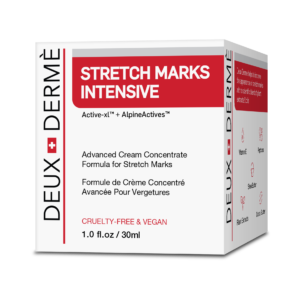The beauty of being a prepubescent child is that you usually have few worries. Most kids don’t worry about cutting their nails, washing or brushing their hair, or wearing matching clothes. Parents make sure those things get done, and for the kids, they’re just chores.
Kids most certainly aren’t worried about developing stretch marks during a growth spurt, but as parents, you might need to worry about it on their behalf. Some words that adults suffering from the condition use to describe their stretch marks are “distressing” and “disfiguring.” Since no one wants to raise a child who grows up distressed about their appearance and feeling disfigured, it’s important to take steps to help your adolescent prevent stretch marks to avoid many years of self-consciousness down the road.
When Do Puberty Stretch Marks Appear?
Since all children reach puberty at different ages, it’s impossible to pinpoint exactly when you should start taking measures to help your child prevent stretch marks. To be safe, it may be good to start engaging in preventive measures when your child turns ten and maintaining the prevention routine throughout their teenage years.
One sign that a child is getting ready to hit a growth spurt is complaining about legs aching. Often, legs will ache as the body prepares itself to grow several inches, so if your child is complaining about leg pain with no obvious sign of injury, he/she may be getting ready to hit a growth spurt.
Preventing Stretch Marks During Puberty
The good news is that helping your child prevent stretch marks requires only a few minor lifestyle and diet changes.
- Foods That Promote Collagen Development: Green vegetables, berries, avocados, and lean meats are foods that promote the development of collagen—a protein in the body that strengthens skin, elasticizes it, and help prevent skin from stretching, tearing, and scarring during growth spurts. If your child will eat these types of foods, try to integrate them into his/her daily meals.
- Hydration: A hydrated body equals hydrated skin, and hydrated skin is less like to stretch, tear, and scar during growth spurts. Check with your pediatrician to find out how much water is recommended for your child to drink each day, and make an effort to ensure your child drinks it.
- Avoid Overconsumption of Sugar: All children love candy, sweets, and sodas, but the amount of these things they consume should be limited to prevent stretch marks (and other undesirable issues like weight gain). Excess sugar in the body attaches to collagen proteins and damages them, increasing the likelihood that stretch marks will form.
- Have Them Use a Stretch Mark Lotion Daily: While commonly marketed to pregnant women, stretch mark prevention lotions can be beneficial to adolescents as well because they hydrate, soften, and strengthen skin, helping to prevent stretch marks. Check with your pediatrician for advice on a safe product for your child to use—you’ll want to avoid exposing them to unnecessary chemicals—and then have your child get in the habit of using the lotion daily.


